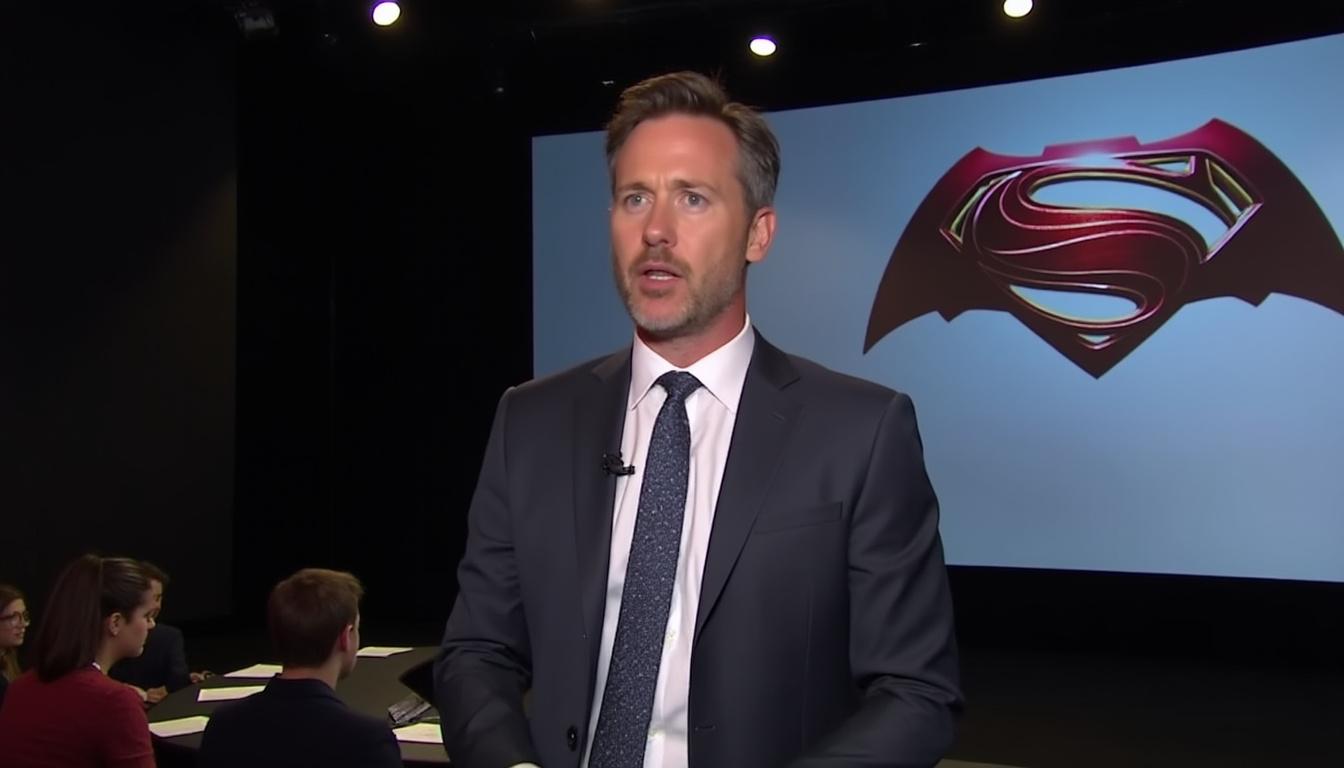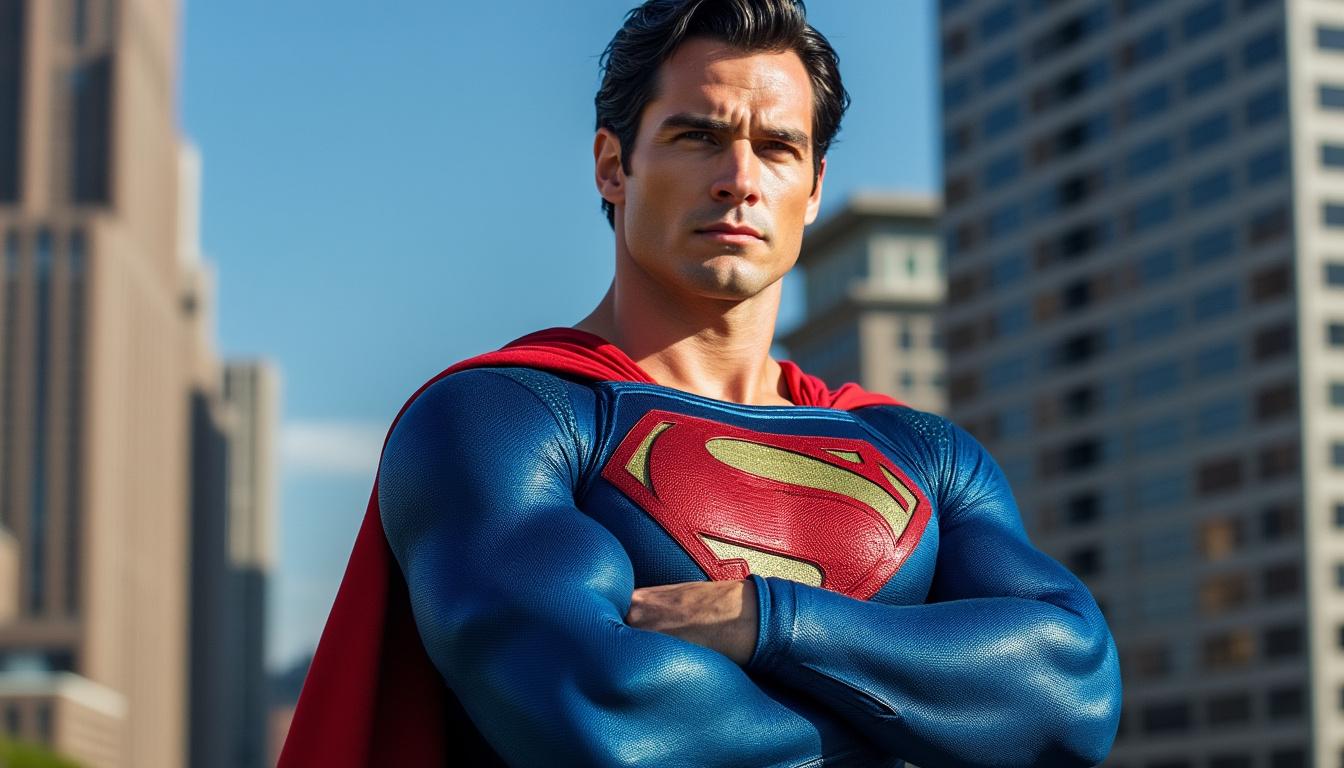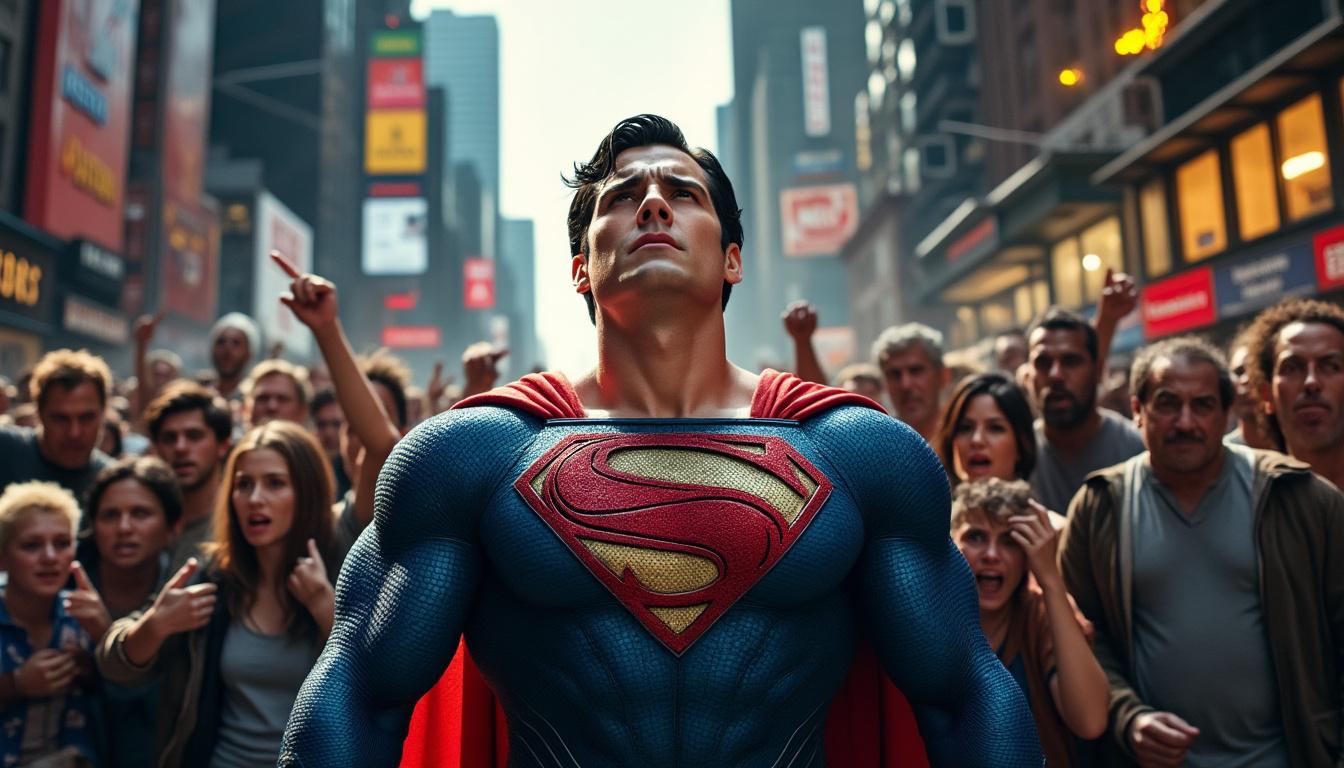The recent announcement from DC Studios has stirred considerable discussion among fans of the franchise, particularly surrounding the latest Superman film, which is set to release on July 11, 2025. Among the myriad reactions, the most notable is the removal of a particular scene from the film due to overwhelmingly negative feedback from viewers. Directed and written by James Gunn, this latest installment aims to rejuvenate the Superman narrative with humor and heart, but it has also ignited a significant Hollywood controversy, reflecting the ongoing balance between artistic vision and audience expectation.
Backlash and the Changing Landscape of Comic Book Movies
In an era where comic book movies dominate the box office, any indication of controversy can significantly impact a project’s trajectory. The scene that was excised featured Superman, portrayed by David Corenswet, in a flying sequence that fans deemed awkward, thanks in part to its questionable CGI quality. This brings into focus the crucial role fan reception plays in contemporary filmmaking—especially in franchises like DC Comics, where audience attachment runs deep. Gunn himself noted that the scene made it into a trailer only because he had not scrutinized the commercial as closely as he typically would, signifying the often chaotic nature of promotional timelines in the film industry.

The decision to discard the scene raises pressing questions about censorship and creative freedom within Hollywood. How much sway should fans have over artistic decisions? It is increasingly apparent that the line between filmmaker intent and viewer response is becoming blurrier, as studios attempt to navigate a crowded and noisy media landscape. The fact that Gunn publicly explained his rationale for this decision points to an evolving dialogue where transparency and accountability are paramount.
- Fan backlash can lead to significant changes in movie production.
- CGI and visual quality play a vital role in viewer perception.
- Directors are increasingly held accountable for promotional materials.
The Role of Social Media in Fan Backlash
Social media platforms have transformed the way audiences engage with films, often amplifying their voices on controversial issues in mere seconds. As fans vented their frustrations online regarding the Superman flying scene, the repercussions were felt swiftly throughout Warner Bros. and DC Studios. A striking example involves Zack Snyder’s Justice League, where extensive fan campaigning ultimately led to the release of an entirely different cut of the film. The impact of fan mobilization cannot be underestimated, as it highlights the power dynamic in play between creators and consumers in today’s cinematic ecosystem.
The situation with the Superman trailer also evokes comparisons to past controversies surrounding other comic book adaptations. For instance, the casting choices and character interpretations in previous adaptations have frequently highlighted the discontents of fan bases. The tension between creative reinterpretation and fan loyalty is a recurring theme that directors like Gunn must navigate carefully.
| Controversy | Impact on Film | Fan Reaction |
|---|---|---|
| Superman CGI Scene | Scene Omitted from Final Cut | Widespread Negative Feedback |
| Zack Snyder’s Justice League Cut | Release of Snyder Cut | Strong Fan Support, Mobilization |
| Batman vs. Superman | Extended Versions and Edited Cuts | Diverse Reactions, Mixed Reviews |
As this dynamic continues to evolve, it becomes increasingly clear that social media’s influence has reshaped not just marketing strategies, but also the very fabric of filmmaking itself. In a world where fan reactions can dictate creative directions, filmmakers must tread carefully, balancing their vision against the expectations of an impassioned audience.
James Gunn’s Vision and the Future of Superman
Setting aside the negative backlash, it is essential to consider James Gunn’s overarching vision for Superman within the broader context of the DC Universe. In his reinterpretation, Gunn seeks to blend action, humor, and emotional depth, emphasizing themes of compassion and goodwill that have defined the character since his inception by Jerry Siegel and Joe Shuster. Woven into this narrative is an attempt to reinvigorate a franchise that has faced mixed reviews in the past.

The director emphasizes constructing a Superman who resonates with contemporary audiences while remaining faithful to the essence of the character. The casting choices reflect this vision, with a talented ensemble supporting Corenswet as the titular hero, including Rachel Brosnahan as Lois Lane and Nicholas Hoult as Lex Luthor. This notable departure from previous incarnations also sheds light on the evolving portrayal of iconic characters in Hollywood.
The Importance of Character Development
In contrast to Snyder’s often darker themes, Gunn’s approach promises a more hopeful and relatable hero, effectively shifting the tone of Superman from the gritty narratives viewers have come to expect. This decision aims to engage not just die-hard fans but also a new generation who may be unfamiliar with the character’s extensive backstory.
- Emphasizing compassion and humanity in storytelling.
- Creating space for diverse character interpretations.
- Reimagining heroism in a contemporary setting.
Gunn’s focus on character development speaks to a larger trend in comic book movies where depth is not sacrificed for action. As studios strive to cater to audiences seeking meaningful narratives alongside conventional thrills, filmmakers are challenged to innovate continually. The narrative journey outlined in the new Superman film appears to be an endeavor that encompasses both critical engagement with contemporary issues and timeless narratives of hope and resilience.
The Balance of Artistic Freedom and Audience Expectation
As the industry continues to evolve, the friction between the creative impulses of directors like Gunn and the vocal preferences of the audience underscores a vital discourse about the future of storytelling in film. The debate hinges on understanding the role of fan engagement in guiding the creative process without entirely compromising artistic integrity. This delicate balance becomes even more crucial in light of the reimagined Superman narrative, where expectations are heightened by the legacy of previous adaptations.

Hollywood’s historical approach has often leaned toward audience appeasement, particularly during extensive pre-release testing screenings. However, with the rise of social media, immediate feedback can drastically alter the course of a film’s production. This has raised concerns over the potential for censorship of creative ideas, as directors navigate the fine line between taking creative risks and adhering to fan demands.
The Dialogue Between Fans and Filmmakers
This dialogue is not merely reactive; it presents an opportunity for filmmakers to engage with fans critically and thoughtfully. As witnessed in past campaign successes, fan support can cultivate an enriching negotiation between audience desires and filmmaker visions. In this sense, a partnership can emerge that bolsters both the integrity of storytelling and an appreciation for artistic expression.
- Understanding the impact of fan feedback on narrative choices.
- Acknowledging the complexity of audience expectations.
- Fostering a constructive dialogue between creators and fans.
As filmmakers continue to grapple with this evolving landscape, exploring how these discussions shape future narratives will remain paramount. The Superman film directed by Gunn offers a lens through which to evaluate the ongoing evolution of comic book adaptations and their resonance with modern audiences.
Historical Context and Future Implications for DC Comics
Looking back, DC Comics has often walked a precarious line between broadening its audience and honoring the core principles that established its characters. In many instances, significant shifts have occurred when fans speak out against certain portrayals, created not only in film but also in other media adaptations. The transition from the campy representations in older series to darker iterations under Snyder exemplifies this ongoing evolution within the franchise.
The importance of this historical context cannot be overstated. With every adaptation, there lies an opportunity for revisioning characters that ages as richly as the stories themselves. As audiences shift and mold their expectations, studios like Warner Bros. must adapt correspondingly, pivoting around topics like inclusivity and relatability. The story of Superman in 2025 reflects a turning point, illustrating how far both the character and the franchise have come—and where they might head next.
The Future for Heroes in Film
The landscape of superhero cinema looks as if it will continue evolving in response to fan dynamics. As conversations about representation, thematic relevance, and visual storytelling continue to take center stage, upcoming projects will likely reflect similar contests and collaborations between audience preferences and filmmaker visions. How future heroes are shaped in this space will serve as critical indicators of what audiences can expect going forward.
| Era | Key Characteristics | Significant Films |
|---|---|---|
| Golden Age | Origin stories, classic heroism | Superman: The Movie |
| Modern Era | Dark themes, complex moral dilemmas | Man of Steel, Batman v Superman |
| Future | Focus on compassion, humor, and humanity | Superman (2025) |
This future-forward approach to storytelling will inevitably shape not just Superman’s narrative but also the entire DC Universe’s trajectory. The combination of fan input, director vision, and an understanding of cultural contexts will continue to guide how these beloved characters are depicted in upcoming big-screen adventures.


